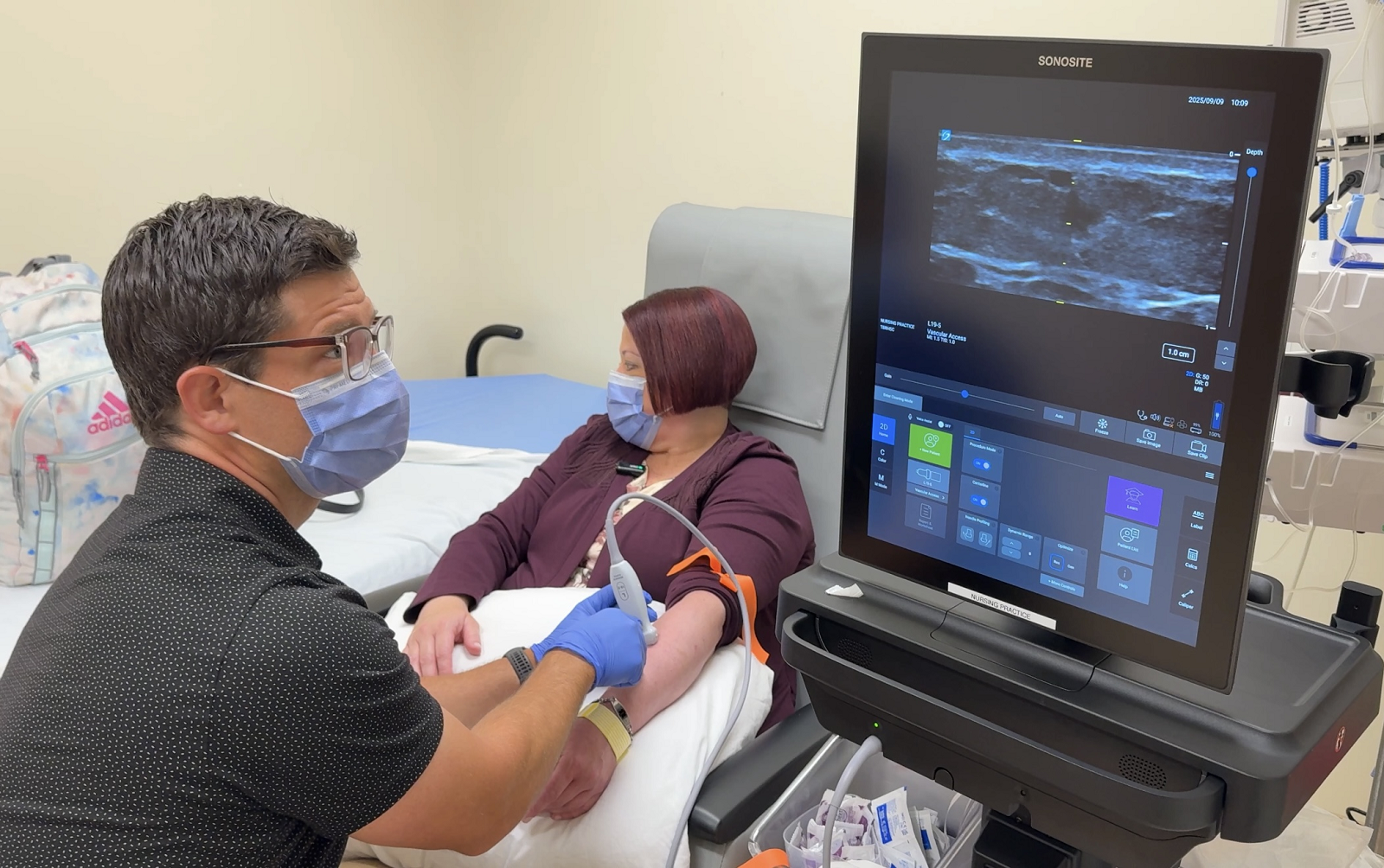The Hospital's New Cutting-edge Ultrasound Reduces IV Pain and Pokes –and You Helped Purchase It!
Published Tuesday, September 16, 2025

For many patients, just getting IV inserted can be an ordeal in itself. But the Thunder Bay Regional Health Sciences Centre now provides a cutting-edge service that makes IVs, PICC lines, and other vascular insertions faster, safer, and less painful for patients with just one poke.
It's called vascular access (VA) ultrasound – and generous donors like you helped bring the system to Thunder Bay.
Justin Ross, Vascular Access Clinical Nurse Specialist at the Hospital, spearheaded the new program designed to decrease pain, anxiety, and difficulty of vascular insertions – and ensure patients get the medications they need.
The Hospital has highly skilled nurses, but damaged and hard-to-find veins make it difficult for even the most experienced nurses to insert an IV. VA ultrasound uses image-guided technology to find a suitable vein and insert the IV the first time, almost every time.
“It does wear on people – those repeated pokes,” Ross said. “In all my years of nursing, I've never gotten appreciation like I do using VA ultrasound.”
The idea of image-guided IV insertions is not new. The Hospital has an older model, used primarily for speciality insertions such as peripherally inserted central catheters or PICC lines. Ross said that since receiving the upgraded technology this past summer, he's never missed an insertion – even for the most difficult insertions.
And there are a surprising number of difficult insertions. Ross travels the Hospital with the portable unit all day. Often, IVs are the best way to directly deliver medications, fluids, and other interventions. However, for those who need regular treatments, veins can easily get scarred and damaged.
“I set up an IV for one cancer patient – a younger guy who was otherwise healthy. And he said he'd been poked 15, 16 times, but they couldn't find a vein,” Ross said. “He was getting discouraged, as you can imagine.”
For patients like this, the VA ultrasound has literally been life-changing. Ross said that one of the psychological effects for patients is a loss of hope every time there's a miss. The VA ultrasound gives back that hope.
“I said to the guy, ‘Hold on, let me take a look.' And sure enough, the ultrasound showed a nice big vein in the forearm, right where we like to put IVs. It was just a little deeper, so there was no way the nurses could see it. But the ultrasound saw it. Sure enough, I inserted the IV the first try. You had to be there – he was so thankful,” he said.
It's even more heartbreaking when the patient is a child. VA ultrasound has a tremendous impact on the Hospital's youngest patients – and their caregivers.
“Justin Ross has been a huge help on the Paediatric Floor,” said Brooke Siebenga, a paediatric nurse on IB. “If we can't get the IV in after two tries, we call Justin. It reduces anxiety in the patients and the parents, and provides safer and more appropriate treatment for acute paediatric patients. I know that all the nurses here feel supported, too – this resource helps us provide exceptional Patient and Family Centred Care.”
Paediatricians appreciate the support as well.
“Justin's effective PICC line insertion recently was crucial for good patient care,” said Dr. Ranjit Baboolal. “The ultrasound guidance is a step in the right direction for better patient care and supports our skilled nurses with additional options for those very difficult IV insertions."
Your help provides relief for patients like these every single day. Please help us support more patients by making a donation to the Health Sciences Foundation, attending a Foundation event, or buying Thunder Bay 50/50 tickets. You're making a world of difference!
Article By: Graham Strong